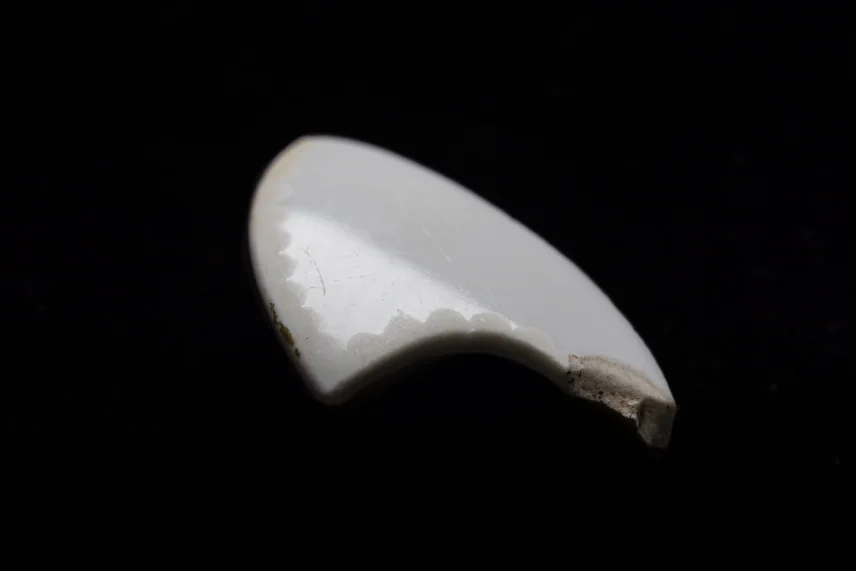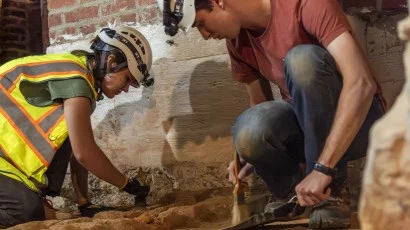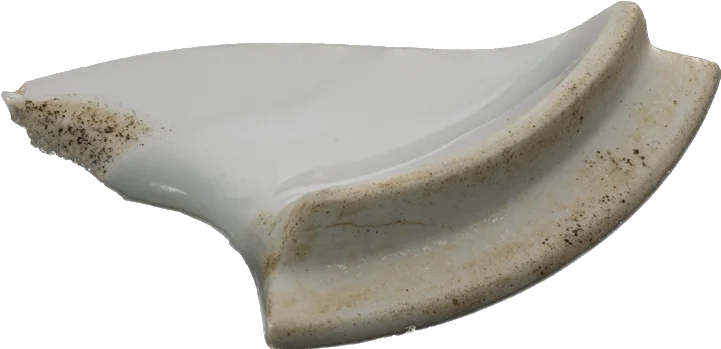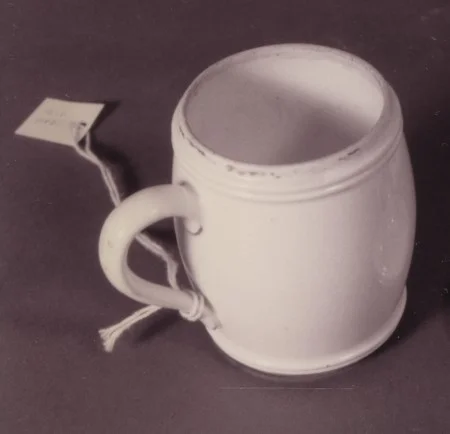In the world of archaeology, every artifact has a story to tell.
Ahead of the Mansion Revitalization Project, Mount Vernon archaeologists excavated the area north of the Mansion. While examining a ceramic fragment excavated near the north end of the piazza, archaeological lab analysts Angela Bailey and Alice Keith identified it as a lid from the white and gold French porcelain service that George Washington acquired from the Comte de Moustier in 1790. Making this discovery even more intriguing was a distinctive feature on the fragment—a small purposeful notch in the side, clearly intended for a spoon. This identified the fragment as part of a lid from a mustard pot, one of four listed in Washington's invoice for the service.



